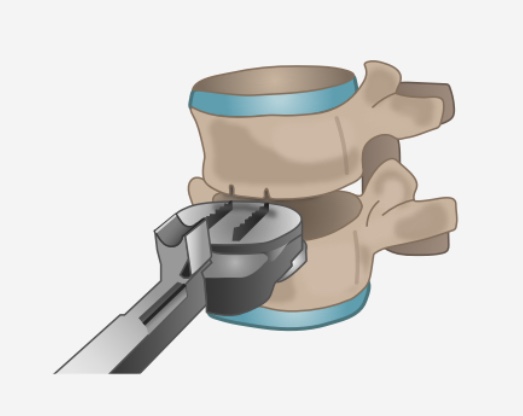Cervical Disc Replacement
What is Cervical Disc Replacement?
Cervical disc replacement is a surgical procedure that involves removing a damaged or degenerated cervical disc and replacing it with an artificial disc replacement implant.
What’s the Cervical Spine?
The cervical spine starts just below the skull and ends just above the thoracic spine. The cervical spine is much more mobile than both of the other segments of the spine. Just think about all the directions and angles you can turn your neck and head.
The neck is made up of seven vertebrae, each referred to by the letter C, followed by an identifying number. For example, the seventh vertebrae in the cervical spine is called C7.
Your cervical spine also forms a protective tunnel for the upper part of your spinal cord to pass through. This part of your spinal cord contains the nerves that supply your upper body with sensation and movement.
What are Cervical Discs?
Cervical discs sit between the vertebrae in the neck. They act as shock absorbers and allow your neck to move freely. These discs, like all other discs in the spine, are made up of two parts: the outer layer and the inner core. The outer layer, called the annulus fibrosus, is made up of strong fibers. The inner core, called the nucleus pulposus, is soft like jelly.
Cervical Degenerative Disc Disease
Cervical degenerative disc disease happens when a disc in the cervical spine becomes damaged. The disc is prone to degeneration as you age. Over time, the inner core of the disc loses hydration and becomes less pliable. This causes the disc to lose height, and the outer layer can weaken, bulge and develop tears. Damaged cervical discs are most likely to occur at the C4-C5, C5-C6 or C6-C 7 levels.
Degenerative disc disease causes pain in multiple ways:
- As the degenerated disc loses its height and flexibility, this can cause abnormal motion in the spine which causes pain.
- The degenerating disc itself may also become a source of pain, as the inflammatory proteins from the inner core of the disc may affect nerve fibers in the outer layer.
- In some cases, the disc space can collapse enough to compress a nearby nerve root, leading to radiating arm pain known as cervical radiculopathy.
Pain from cervical degenerative disc disease causes a stiff neck, but it can also radiate into the shoulders, arms, hands and fingers, depending on what isd causing the pain. It usually goes away over time as inflammatory proteins subside and the disc returns to a more stable position. If it does not, a cervical disc replacement may be needed.
What is Cervical Disc Replacement Surgery?
Cervical disc replacement surgery involves removing a diseased cervical disc and replacing it with an artificial one. The disc replacement implant mimics the natural disc’s form and function and will restore neck movement. Several artificial cervical discs are available to treat cervical disc problems.
Before this procedure was available, the affected disk was removed, and the vertebrae above and below were fused together to prevent motion.
Like hip and knee joint replacement, modern spinal disc replacement devices are made of high-grade metals and plastic and help maintain the neck’s natural motion. The disc replacement implant is typically composed of two metallic surfaces, one of which is attached to the upper and the other to the lower vertebra at the affected disc level. These metal implants can slide on each other directly or can be separated by a piece of medical grade plastic.
Disc replacement surgery may have the advantage of allowing more movement and creating less stress on your remaining vertebrae than traditional surgery.
Who Qualifies?
Common Symptoms May Include:
- Neck pain
- Neck stiffness
- Headaches
- Pain that travels down into the shoulders or arms
- Weakness of your shoulders, arms, hands, or legs
- Numbness or “pins and needles” feeling in the arms
Disc replacement is only proven to work in one to two levels of the neck. For patients with more extensive problems, a replacement may not be a good option. Talk to your doctor about your surgical options.
Disclaimer – All information is for educational pursuit and information purposes only. It is not intended nor implied to be a substitute for professional medical advice. The viewer should always consult his or her healthcare provider to determine the appropriateness of the information for their own situation or if they have any questions regarding their medical condition, diagnosis, procedures, treatment plan, or other health related topics.
Follow Us
Request An Appointment
Address: 3273 Claremont Way, Ste. 201, Napa, CA 94558
Phone: 707-603-1042

